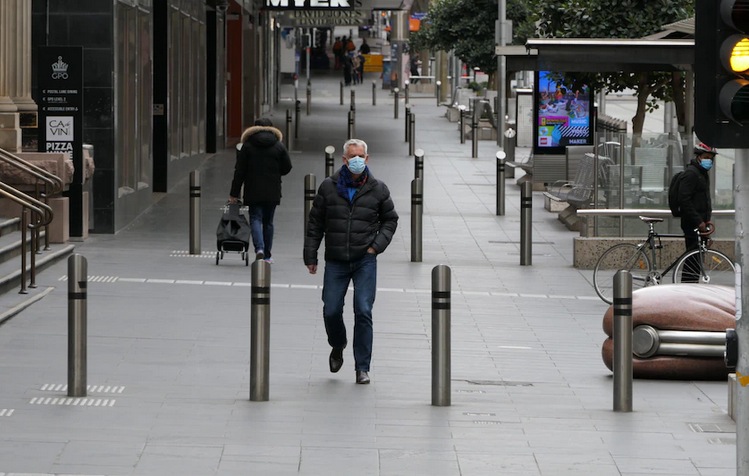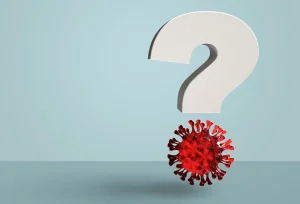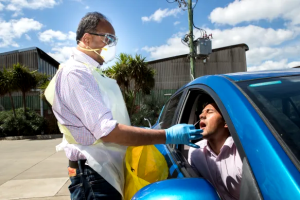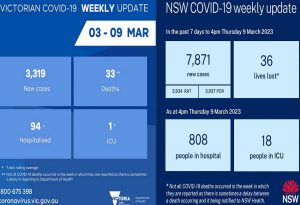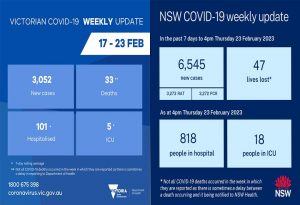Source: ABCnews
In the past few days, Victoria has notched up hundreds of new mystery cases, as the outbreak overruns the state’s contact tracers.
While it is uneasy to see case numbers climb back into figures not seen since the deadly second wave last year, this is part of the plan: To keep a lid on case numbers while we race to reach thresholds of 70 and 80 per cent vaccination.
So, how should Victorians consider the past few days of figures?
It is not as bleak as it looks, maybe
University of Melbourne professor of mathematical biology James McCaw said the state was still on the right path, despite the rate of community transition being higher than desired.
“So, at the moment, Victoria is suppressing transmission really well,” Professor McCaw said.
“The reproduction number is higher than we’d like. It is over 1.0, so we’re seeing the epidemic continue to grow. But it’s growing slowly, compared to what Delta could [do].”
Professor McCaw is also part of the Doherty Institute and has helped develop the modelling that is underpinning Australia’s four-stage plan to transition away from lockdowns.
He said that Victoria was suppressing transmission in a way that was compatible with the national plan for when vaccine coverage got to 70 and 80 per cent and beyond.
However, University of South Australia epidemiologist Adrian Esterman said Victorians needed to do more to get over the line.
“New South Wales, their reproduction number, according to me, is below one today for the first time since the outbreak started,” Professor Esterman said.
“So, there is a light at the end of the tunnel for them, whereas Victoria’s [reproduction number] is 1.4.
“That still needs to come down further for us to see a decrease in the rate of increase of cases, let alone case numbers.”
Professor McCaw said the reproduction number basically indicated how many people to whom an infectious person passed the virus.
If that number was 1.0, it would mean the outbreak would grow, he said. If it was below 1.0, new case numbers would decline.
“In Victoria, that number is slightly above 1.0 at the moment,” Professor McCaw said.
“It could be much, much higher if we didn’t have the public health restrictions and we didn’t have the contact-tracing system — the test, trace and isolate [quarantine] is still making a difference.”
Is Victoria’s contact tracing working?
Both epidemiologists agree the rising number of cases impact contact tracing.
Professor Esterman said it was clear that contact tracers soon would not be able to keep up.
Professor McCaw said contact tracing would only ever be optimally effective when the case numbers were very low, which was not the case in Victoria.
“We know there are unlinked cases. We know that there are cases who were infected in the community,” Professor McCaw said.
“However, that doesn’t mean the system is not helping. It’s clearly still helping.
“There are still people who have been contact traced and asked to quarantine, who later become infected. And, so, they’ve been in isolation during some of their infectious period.”
However, Professor McCaw said, it was hard to measure the system’s effectiveness in a quantitative sense.
“It’s just simply a very difficult thing to do,” he said.
“But we assessed at the peak of the Victorian second wave … it was making a difference. And, at the moment, Victoria’s system should be about as effective, if not even slightly more effective.”
Are Victorians less compliant now?
Last week, Victorian Premier Daniel Andrews said the state had abandoned its COVID-zero strategy in the face of Delta.
“Now we have to contain the growth of cases and the speed at which they increase and, hopefully, keep the number of people who are vaccinated ticking over faster than the number of cases,” Mr Andrews said.
“That is going to be challenging. It would be impossible if we opened up.”
Since then a video has emerged of social media personality Nadia Bartel at a gathering. Four women, including Ms Bartel, were collectively fined more than $21,000 for breaking lockdown laws.
Police also fined a number of people in Melbourne’s inner south-east and are investigating an alleged assault at a religious gathering that violated public health orders.
So, has the shift from COVID-zero affected compliance?
Professor Esterman said that it might be that the compliance was not as good this time as it was previously.
“The lockdown will not work if people aren’t complying properly with it,” he said.
“You could argue that people in other states and territories are more compliant, but it could be that they haven’t had lockdowns like Victoria has had.”
However, Professor McCaw said studies had shown Victorians were still very compliant and the majority of the population were doing the right thing.
“There has been no clear drop over the last month in compliance. In fact, it’s stable,” Professor McCaw said.
“Congratulations to Victorians who, by and large, take this very seriously and help keep the Victorian epidemic under control.”
What can we expect?
Victorian health department projections show there could be 18,000 active cases by mid-October, with 800 people hospitalised under that scenario.
The projections are being used to help the health system plan ahead to cope with increased care needs from people sick with COVID-19.
Are these projections correct or do growing numbers skew that prediction?
Professor McCaw said the future remained uncertain because the reproduction number was so close to one.
However, he said, if vaccine uptake remained high and across the board, transmission could be prevented.
“We could see over the next month … cases stabilise and decrease, which would be wonderful,” Professor McCaw said.
“But we could also see them continue to grow towards numbers like what we are seeing in New South Wales. At the moment, it is hard to predict COVID.”
He said the emergence of any new, highly infectious variant could further complicate things in the future.
However, he said, the Victorian epidemic was being suppressed in a way that was sufficient to make the transition away from lockdowns as per the national plan.
Professor Esterman said things would get much worse in terms of case numbers before they got better.
“Yes, we will start getting into the several hundred cases a day,” he said.
“The question then is, ‘What percentage of those people are going to get sick and end up in hospital?'”
He said the hospitalisation figure had become controversial.
“NSW is saying that 5 per cent of infected people end up in hospital,” Professor Esterman said.
“But they don’t include hospital-at-home, and they have huge numbers of people actually being managed at home by nurses and medical staff.
“So, the whole question of how you define things like, ‘What percentage will be hospitalised?’ has to be looked at very carefully.”
However, he said, there was hope for the future.
“There will be a time in the next three or four weeks when the Victorian hospital system is going to be struggling but, really and truly, I think they can manage,” Professor Esterman said.
“Especially when they know that there’s a very high chance those numbers will stabilise and start coming down. I think that’s what gives everyone hope.”


